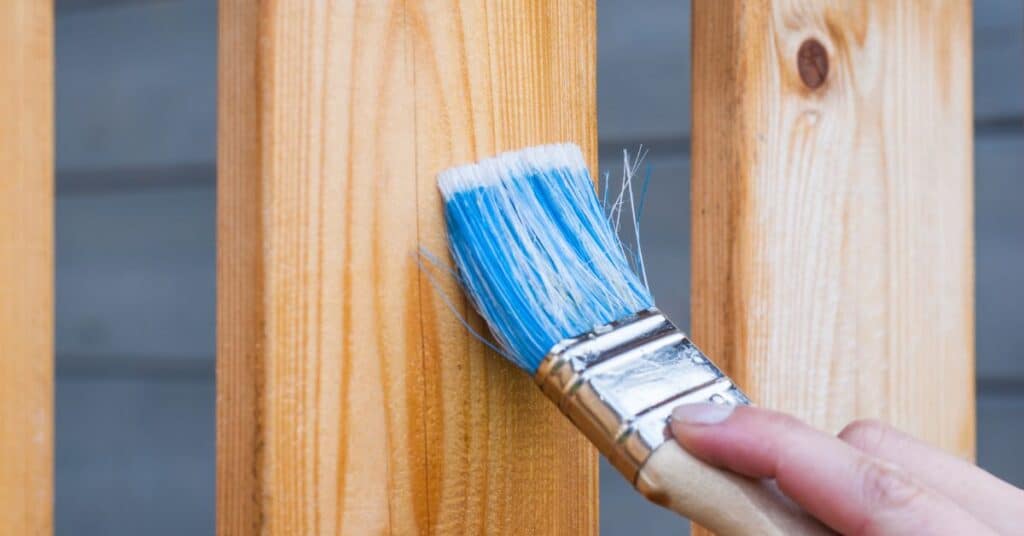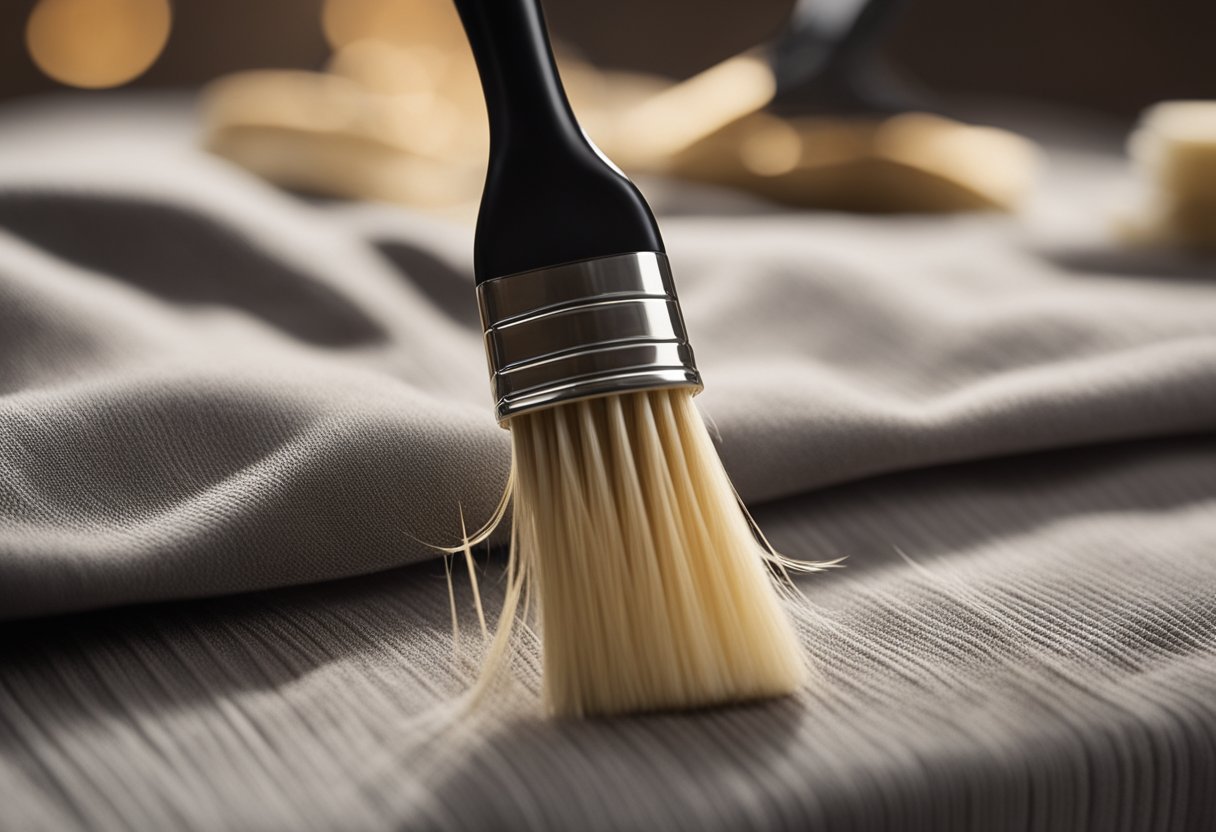Cleaning a brush with varnish on it requires patience and the right technique to ensure that the brush remains in good condition for future use. Varnish can provide a durable finish, but if left to harden on the bristles of your brush, it can ruin the brush’s effectiveness. Knowing how to properly clean your varnished brush can save you time and money, and keep your brushes ready for your next project.

When dealing with varnish, it’s important to act quickly after use to prevent the varnish from drying. Using the appropriate solvents and a step-by-step approach will enable you to clean your brush without damaging it. Proper maintenance after cleaning also plays a crucial role in prolonging the life of your brush, ensuring the bristles remain smooth and pliable for the best painting results.
Understanding Varnish Removal
Removing varnish from your brush requires knowledge of the varnish type and adherence to safety measures to protect your health and the environment.
Types of Varnish
Varnish comes in different formulas, each with specific removal methods:
- Oil-based varnish: You’ll need a solvent such as mineral spirits or paint thinner.
- Water-based varnish: Warm, soapy water often does the trick, or you can use a specialized water-based varnish remover.
Safety Precautions
When removing varnish, your safety is paramount:
- Ventilation: Work in a well-ventilated area to avoid inhaling fumes.
- Protective gear: Wear gloves and possibly a mask to protect your skin and lungs.
- Proper disposal: Don’t pour solvents down the drain. Check local regulations for disposal.
Pre-Cleaning Procedures

Before you begin the cleaning process, it’s important to have your materials ready and to prepare your work area properly to ensure a smooth and safe cleaning experience.
Gathering Materials
First, gather the following items to ensure you have everything needed to clean your brush effectively:
- Mineral spirits or paint thinner: To dissolve the varnish from the bristles.
- Protective gloves: To keep your hands clean and protected from harsh chemicals.
- Brush comb: To gently remove varnish from the brush during the cleaning process.
- Two containers: One for the initial wash and another for the rinsing phase.
- Paper towels or old rags: For wiping excess varnish and cleaner from the brush.
- Safety goggles: To protect your eyes from splashes.
Preparing the Work Area
To prepare your work area, follow these steps:
- Choose a well-ventilated area to work in, preferably outdoors or in a space with open windows, to prevent inhalation of fumes.
- Cover your working surface with newspaper or a disposable plastic sheet to protect it from any spills or drips.
- Place your containers, paper towels, or rags, and other cleaning materials within easy reach.
- Put on your protective gloves and safety goggles to safeguard your skin and eyes throughout the cleaning process.
Step-by-Step Brush Cleaning
Proper cleaning of your brush after using varnish is crucial to maintain its quality and longevity. Follow these steps to ensure a thorough clean.
Initial Varnish Removal
First, wipe off excess varnish from the brush using a paper towel or rag. Press the bristles against the towel on a flat surface and gently pull the brush towards you to squeeze out most of the varnish.
- Materials Needed:
- Paper towels or clean rags
Deep Cleaning the Bristles
Submerge the bristles in a solvent appropriate for the type of varnish used. Use a brush comb or your fingers to gently separate the bristles and remove any trapped varnish.
- Solvents for Different Varnishes:
- Oil-Based Varnish: Mineral spirits or turpentine
- Water-Based Varnish: Warm soapy water
Rinsing and Drying
After the deep clean, rinse your brush thoroughly with clean solvent or water until it runs clear. Gently shake off excess liquid and reshape the bristles. Lay the brush flat to dry on a towel or hang it with the bristles facing down to avoid water seeping into the ferrule.
- Rinsing Tips:
- Oil-Based Varnish: Rinse with fresh mineral spirits.
- Water-Based Varnish: Use clean, warm water.
Maintenance Tips

Proper care of your brushes can significantly extend their lifespan and quality of performance.
Regular Cleaning Routines
- Immediately after use, remove excess varnish by wiping the brush on a rag or paper towel.
- Thoroughly clean with a solvent suitable for the type of varnish used. For oil-based varnish, mineral spirits are effective, while water-based varnish should be cleaned with soapy water.
| Step | Action | Solvent | Notes |
|---|---|---|---|
| 1 | Wipe off excess varnish | Rag or paper towel | Minimizes the amount of solvent needed |
| 2 | Rinse with first solvent | Appropriate solvent | Removes the majority of the varnish |
| 3 | Wash with second solvent | Soapy water or mineral spirits | Ensures the removal of any residual varnish |
| 4 | Rinse and dry | Clean water | Prevents solvent residue |
Proper Storage Practices
- Dry the brush completely before storage to prevent bristle damage and the growth of mold.
- Store upright in a jar or hang from a hook to maintain the brush’s shape.
- Avoid direct sunlight and extreme temperatures, which can warp the handle and damage the bristles.
| Storage Tip | Importance |
|---|---|
| Complete drying | Prevents damage and mold |
| Upright positioning | Keeps bristles straight |
| Controlled environment | Protects against warping and damage |
Frequently Asked Questions
What’s the best way to clean a brush after applying water-based varnish?
For water-based varnishes, rinse your brush immediately after use with warm, soapy water. Work the soap through the bristles and then rinse until the water runs clear. Gently reshape the bristles and leave the brush to dry.
Is white spirit a suitable solution for removing varnish from brushes?
White spirit is effective for cleaning oil-based varnishes from brushes. Dip the brush into the white spirit and work the solvent through the bristles until the varnish dissolves. Follow with a soap and water wash, then rinse and reshape the brush to dry.
How should you store brushes between applying different coats of varnish?
To store brushes between coats, wrap the wet brush in cling film or aluminum foil to prevent the varnish from drying and hardening on the bristles. This also keeps the brush moist and ready for the next application.
What steps should be taken to rejuvenate a brush that has hardened from dried varnish?
Immerse the hardened brush in a brush restoration solution designed for varnishes. Allow it to soak according to the manufacturer’s instructions before attempting to gently comb out the softened varnish. Wash with warm, soapy water, rinse, reshape, and let it dry.
Can you safely reuse a brush that was used for applying varnish and how?
Yes, you can safely reuse a brush if it has been properly cleaned. After applying varnish, promptly clean the brush according to the varnish type and store correctly.
